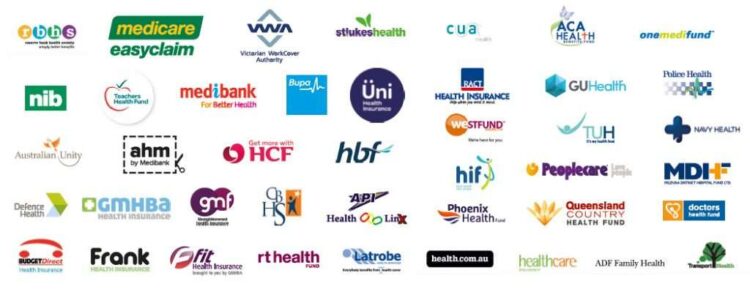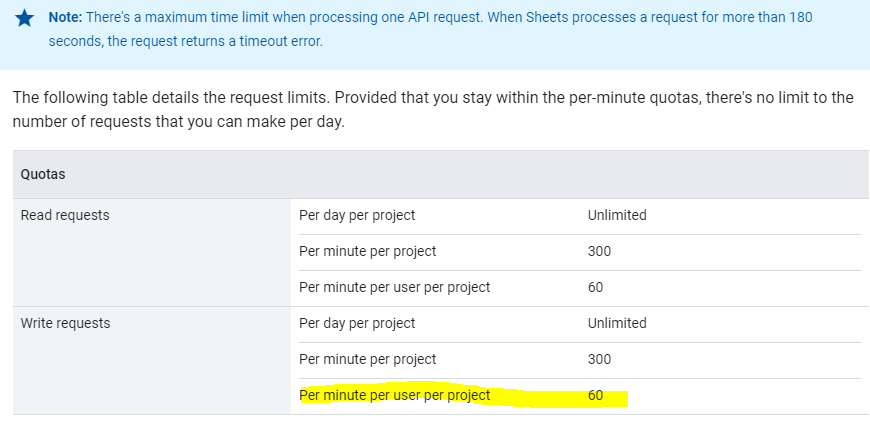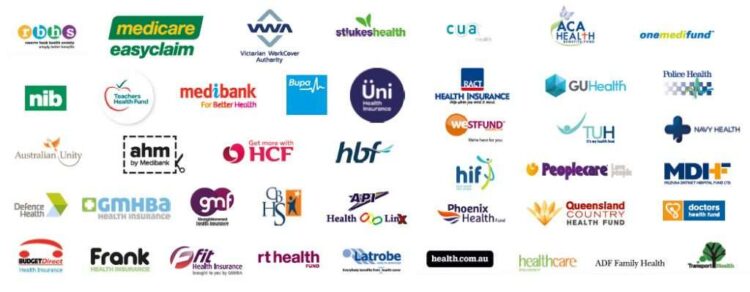
Why health insurance is so expensive is a question that plagues many Americans. The cost of healthcare has been steadily rising for decades, and health insurance premiums have followed suit. This escalating cost is a complex issue with no easy answers, but understanding the underlying factors is crucial for finding solutions.
From rising healthcare costs and administrative burdens to insurance company profits and inefficiencies within the system, several factors contribute to the high price of health insurance. Understanding these factors can help individuals make informed decisions about their healthcare and advocate for changes to the system.
Rising Healthcare Costs

The cost of healthcare in the United States has been steadily increasing for decades, outpacing inflation and putting a strain on individuals, families, and the economy as a whole. This upward trend is a complex issue with numerous contributing factors.
Factors Driving Healthcare Costs
Several factors contribute to the rising cost of healthcare in the United States.
- Increased Utilization of Healthcare Services: As the population ages and life expectancy increases, the demand for healthcare services grows. This includes increased utilization of preventive care, diagnostic tests, and chronic disease management.
- Technological Advancements: While technological advancements in healthcare have led to improved treatments and outcomes, they often come with a higher price tag. New medical devices, pharmaceuticals, and procedures can be expensive to develop and implement.
- Administrative Costs: The complex administrative processes involved in healthcare, including billing, insurance claims, and regulatory compliance, add significantly to overall costs. The fragmented nature of the U.S. healthcare system, with multiple payers and providers, contributes to these administrative burdens.
- Defensive Medicine: The fear of malpractice lawsuits can lead to physicians ordering unnecessary tests and procedures to protect themselves from potential legal claims. This practice, known as defensive medicine, contributes to higher healthcare costs.
- Lack of Price Transparency: The lack of transparency in healthcare pricing makes it difficult for consumers to compare costs and negotiate prices. This lack of transparency can contribute to higher prices, as providers have less incentive to lower costs.
- Inefficiencies in the System: The U.S. healthcare system is characterized by inefficiencies, such as duplication of services, fragmented care, and lack of coordination among providers. These inefficiencies contribute to higher costs.
Technological Advancements and Healthcare Costs
Technological advancements have revolutionized healthcare, leading to improved treatments, earlier diagnoses, and more personalized care. However, these advancements often come with a price tag.
- New Medical Devices: Advanced imaging technologies, such as MRI and PET scans, provide valuable diagnostic information but are expensive to purchase and operate.
- Pharmaceuticals: The development of new drugs and therapies, particularly for complex diseases like cancer and autoimmune disorders, can be costly. The research and development process is lengthy and expensive, and the cost of bringing new drugs to market is often reflected in their price.
- Robotics and Minimally Invasive Surgery: Robotics and minimally invasive surgical techniques offer advantages like faster recovery times and reduced complications. However, the specialized equipment and training required for these procedures can be expensive.
Components of Healthcare Costs
Healthcare costs can be broken down into several major components:
- Hospital Stays: Hospital stays account for a significant portion of healthcare spending. Factors contributing to the high cost of hospital care include complex procedures, advanced technologies, and 24/7 staffing.
- Physician Fees: Physician fees include charges for office visits, consultations, and procedures. These fees can vary depending on the physician’s specialty, location, and experience.
- Prescription Drugs: Prescription drugs are a significant expense for many individuals and families. The cost of drugs can vary widely depending on the type of medication, its complexity, and its brand name status.
- Other Healthcare Services: Other healthcare services include home healthcare, long-term care, mental health services, and dental care. These services also contribute to overall healthcare costs.
Healthcare Costs in the United States Compared to Other Developed Countries
The United States spends significantly more on healthcare than other developed countries, despite having lower life expectancy and poorer health outcomes.
| Country | Healthcare Spending per Capita (USD) | Life Expectancy (Years) |
|---|---|---|
| United States | $11,072 | 78.8 |
| Switzerland | $8,122 | 83.4 |
| Germany | $6,339 | 81.1 |
| Canada | $5,278 | 82.4 |
| United Kingdom | $4,467 | 81.3 |
Administrative Costs
Administrative costs are a significant contributor to the high cost of health insurance. These costs include expenses incurred by insurance companies for managing their operations, such as marketing, claims processing, and fraud prevention.
Administrative Costs in Health Insurance
The administrative costs of health insurance are the expenses incurred by insurance companies in managing their operations. These costs include:
- Marketing and advertising
- Claims processing and management
- Fraud prevention and detection
- Customer service
- Information technology and data management
- Compliance with government regulations
These costs can vary significantly depending on the size and complexity of the insurance company, as well as the types of health insurance plans offered.
The Role of Insurance Companies in Administrative Costs
Insurance companies play a significant role in driving up administrative costs. They often invest heavily in marketing and advertising to attract new customers. Additionally, the complexity of health insurance plans and the increasing number of regulations have increased the costs of claims processing and compliance.
“Administrative costs have been rising steadily over the past several decades, driven in part by the increasing complexity of health insurance plans and the growing number of regulations.” – The Kaiser Family Foundation
Comparison of Administrative Costs
The administrative costs of private health insurance are generally higher than those of public health insurance programs. This is because private insurance companies are profit-driven and must cover their administrative expenses through premiums. Public health insurance programs, such as Medicare and Medicaid, are funded by taxpayers and have lower administrative costs due to their non-profit nature.
“Private health insurance plans typically have administrative costs of around 15% to 20% of premiums, while public health insurance programs like Medicare and Medicaid have administrative costs of around 2% to 3%.” – The Peterson Center on Healthcare
Reducing Administrative Costs, Why health insurance is so expensive
There are several ways to reduce administrative costs in health insurance:
- Simplifying health insurance plans
- Streamlining claims processing
- Improving fraud prevention measures
- Using technology to automate administrative tasks
- Reducing marketing and advertising expenses
By taking these steps, insurance companies can reduce their administrative costs and make health insurance more affordable.
Insurance Company Profits: Why Health Insurance Is So Expensive

Insurance companies, like any other business, aim to generate profits. These profits are crucial for their sustainability, allowing them to invest in new technologies, expand their services, and ensure financial stability.
Profit Margins and Health Insurance Costs
Profit margins play a significant role in determining the cost of health insurance. Insurance companies calculate their premiums based on expected costs, including administrative expenses, medical claims, and a desired profit margin. A higher profit margin leads to higher premiums for policyholders.
Profit Margins of Major Health Insurance Companies
- The profit margins of major health insurance companies can vary significantly, depending on factors such as market share, operating efficiency, and investment strategies.
- For instance, UnitedHealth Group, the largest health insurer in the United States, reported a net profit margin of 10.6% in 2022, while Anthem, another major insurer, had a net profit margin of 4.9% during the same period.
Reducing Profits While Maintaining a Healthy Business Model
- Insurance companies can reduce their profits while maintaining a healthy business model by focusing on operational efficiency, reducing administrative costs, and investing in preventive care programs.
- By streamlining administrative processes and leveraging technology, insurance companies can lower their operational costs, potentially leading to lower premiums.
- Investing in preventive care programs can help reduce the incidence of chronic diseases, ultimately lowering medical claims and improving overall health outcomes. This approach not only benefits policyholders but also contributes to a sustainable business model.
Inefficiencies in the Healthcare System
The U.S. healthcare system is plagued by inefficiencies that contribute significantly to its high costs. These inefficiencies stem from a complex interplay of factors, including a lack of transparency and competition, a culture of defensive medicine, and fragmented care delivery.
Lack of Transparency and Competition
The lack of transparency in pricing and quality of care makes it difficult for patients to make informed decisions about their healthcare. This lack of transparency also limits the ability of consumers to shop around for better prices, hindering competition and driving up costs.
For instance, the cost of a medical procedure can vary widely depending on the hospital or provider. Patients often have no way of knowing what the actual cost will be until after they receive care, making it difficult to compare prices and choose the most affordable option.
Furthermore, the lack of standardized data on quality of care makes it challenging for patients to determine which providers offer the best care. This lack of transparency can lead to patients choosing providers based on convenience or reputation rather than quality, further contributing to rising costs.
Defensive Medicine
Defensive medicine refers to the practice of ordering unnecessary tests and procedures to protect against potential lawsuits. This practice is driven by the fear of malpractice claims and the high cost of medical liability insurance. While intended to safeguard providers, defensive medicine adds significantly to healthcare costs without necessarily improving patient outcomes.
A study by the American Medical Association found that defensive medicine contributes to an estimated 20% of healthcare spending. The study also found that physicians often order unnecessary tests and procedures to avoid potential lawsuits, even when they believe the tests are not medically necessary.
“Defensive medicine is a major driver of healthcare costs. It is estimated that 20% of healthcare spending is due to defensive medicine.”
Fragmentation of Care
The fragmented nature of the U.S. healthcare system contributes to inefficiencies and higher costs. This fragmentation arises from the complex web of providers, insurers, and government agencies involved in delivering care.
The lack of coordination between these entities can lead to duplication of services, unnecessary testing, and delays in care. For example, a patient may see multiple specialists for the same condition, leading to multiple sets of tests and treatments.
Furthermore, the lack of electronic health records (EHRs) across all providers can hinder communication and coordination of care. This can lead to patients having to repeat their medical history to multiple providers, wasting time and resources.
Consumer Demand and Behavior
Consumer demand for healthcare services plays a significant role in driving up healthcare costs. As individuals demand more and more advanced and expensive treatments, the cost of healthcare inevitably rises. This demand is fueled by a variety of factors, including technological advancements, changing demographics, and evolving consumer expectations.
Technology and Demand for Expensive Treatments
Technological advancements have revolutionized healthcare, leading to the development of sophisticated treatments and diagnostic tools. While these innovations have improved patient outcomes and increased life expectancy, they often come with a high price tag. For example, advanced imaging techniques, such as Magnetic Resonance Imaging (MRI) and Computed Tomography (CT) scans, provide detailed anatomical information but are also expensive to perform. Similarly, complex surgical procedures, such as robotic-assisted surgery, offer minimally invasive options but require specialized equipment and trained personnel, contributing to higher costs.
Factors Influencing Consumer Decisions About Healthcare
Consumer decisions about healthcare are influenced by a complex interplay of factors, including:
- Personal Beliefs and Values: Individuals’ personal beliefs about health and illness, as well as their values regarding preventative care and risk tolerance, influence their healthcare choices. For example, someone who strongly believes in the importance of early detection may opt for frequent screenings, even if they are not experiencing symptoms.
- Financial Considerations: The cost of healthcare is a major concern for many individuals. Individuals with limited financial resources may delay or forgo necessary medical care due to concerns about affordability. Conversely, those with greater financial resources may be more likely to seek out expensive treatments, even if they are not medically necessary.
- Access to Information: The availability and accessibility of information about healthcare options and treatments can significantly influence consumer decisions. The internet and social media have made it easier for individuals to research and compare different healthcare providers and treatments. However, it is important to note that not all information available online is accurate or reliable.
- Doctor-Patient Relationship: The relationship between a patient and their doctor is a critical factor in healthcare decision-making. Patients who trust their doctors and feel comfortable discussing their concerns are more likely to follow their doctor’s recommendations. Conversely, patients who lack trust in their doctors may be more likely to seek out second opinions or alternative treatments.
Informed Healthcare Decisions
Consumers can make more informed decisions about their healthcare by:
- Understanding their health insurance coverage: Familiarizing themselves with the benefits and limitations of their health insurance plan can help consumers make informed decisions about the services they choose. Knowing their deductible, copayments, and out-of-pocket maximums can help them avoid unexpected costs.
- Asking questions: Before making any healthcare decisions, it is essential to ask their doctors questions about the risks, benefits, and alternatives to different treatments. They should also ask about the cost of different options and explore ways to reduce their out-of-pocket expenses.
- Seeking second opinions: If they are unsure about a doctor’s recommendation, they should consider seeking a second opinion from another healthcare professional. This can help them gather more information and make a more informed decision.
- Comparing prices: Before undergoing a procedure or receiving a treatment, they should compare prices from different healthcare providers. They can use online tools or contact their insurance company to get quotes.
- Considering preventive care: Engaging in preventive care, such as regular checkups, vaccinations, and screenings, can help them identify potential health problems early on, when they are easier and less expensive to treat.
The Role of Government
The government plays a significant role in shaping the healthcare landscape, influencing both the cost and accessibility of health insurance. Its policies, regulations, and programs have a direct impact on premiums, healthcare providers, and ultimately, consumers.
Government Regulation and Healthcare Costs
Government regulations are designed to ensure quality care, protect consumers, and control costs. These regulations can influence healthcare costs in various ways:
- Price Controls: The government can set price limits on certain medical services and prescription drugs, potentially reducing overall costs. For instance, Medicare, the government-run health insurance program for seniors, negotiates drug prices with pharmaceutical companies.
- Licensing and Certification: Government agencies establish standards for healthcare providers, ensuring they meet specific qualifications and maintain certain quality levels. While this enhances patient safety, it can also contribute to higher costs due to the regulatory burden on healthcare providers.
- Antitrust Laws: The government enforces antitrust laws to prevent monopolies and ensure competition in the healthcare market. This can help control costs by preventing price gouging by dominant healthcare providers or insurance companies.
Government Subsidies and Health Insurance Premiums
Government subsidies are financial assistance provided to individuals and families to help them afford health insurance. These subsidies can significantly impact health insurance premiums:
- Affordable Care Act (ACA) Tax Credits: The ACA provides tax credits to individuals and families with lower incomes, reducing the cost of their health insurance premiums. These subsidies are based on income and household size.
- Medicare and Medicaid: Government-run programs like Medicare and Medicaid provide health insurance to seniors, people with disabilities, and low-income individuals. These programs significantly reduce the cost of healthcare for beneficiaries, but they also contribute to overall healthcare spending.
Key Government Policies Influencing Healthcare Costs
Several government policies directly influence healthcare costs:
- Prescription Drug Pricing: Government policies related to drug pricing, such as Medicare’s ability to negotiate drug prices, can significantly impact healthcare costs.
- Hospital Reimbursement Rates: The government sets reimbursement rates for hospitals and other healthcare providers participating in Medicare and Medicaid. These rates influence the costs of hospital care and can impact overall healthcare spending.
- Medical Device Approval: The Food and Drug Administration (FDA) regulates the approval and safety of medical devices. While this process ensures safety, it can also lead to delays and increased costs for developing and bringing new devices to market.
Government Policies to Reduce Healthcare Costs
The government can implement various policies to reduce healthcare costs:
- Promote Preventive Care: Investing in preventive care, such as screenings and vaccinations, can reduce the need for more expensive treatments later.
- Encourage Value-Based Care: Shifting healthcare payment models from fee-for-service to value-based care can incentivize providers to focus on quality outcomes and cost-efficiency.
- Promote Transparency and Competition: Increasing transparency in healthcare pricing and fostering competition among healthcare providers can help control costs.
- Negotiate Drug Prices: The government can negotiate drug prices with pharmaceutical companies, potentially reducing the cost of prescription drugs for consumers.
Final Summary

The high cost of health insurance is a multifaceted issue with no simple solutions. Addressing the factors driving up costs, such as rising healthcare expenses, administrative inefficiencies, and insurance company profits, requires a collaborative effort involving policymakers, healthcare providers, insurance companies, and consumers. By working together, we can strive for a more affordable and accessible healthcare system for all Americans.
FAQ Insights
What are some of the most common reasons for rising healthcare costs?
Several factors contribute to rising healthcare costs, including technological advancements leading to expensive treatments, an aging population with increased healthcare needs, and a growing demand for healthcare services.
How can I lower my health insurance premiums?
You can explore options like choosing a higher deductible plan, enrolling in a health savings account (HSA), and comparing plans from different insurers to find the most affordable option for your needs.
Is there a way to make healthcare more affordable in the United States?
Several potential solutions exist, such as increasing price transparency, promoting competition among healthcare providers, and exploring alternative payment models. Policy changes aimed at reducing administrative costs and addressing drug pricing could also help lower overall healthcare expenses.





